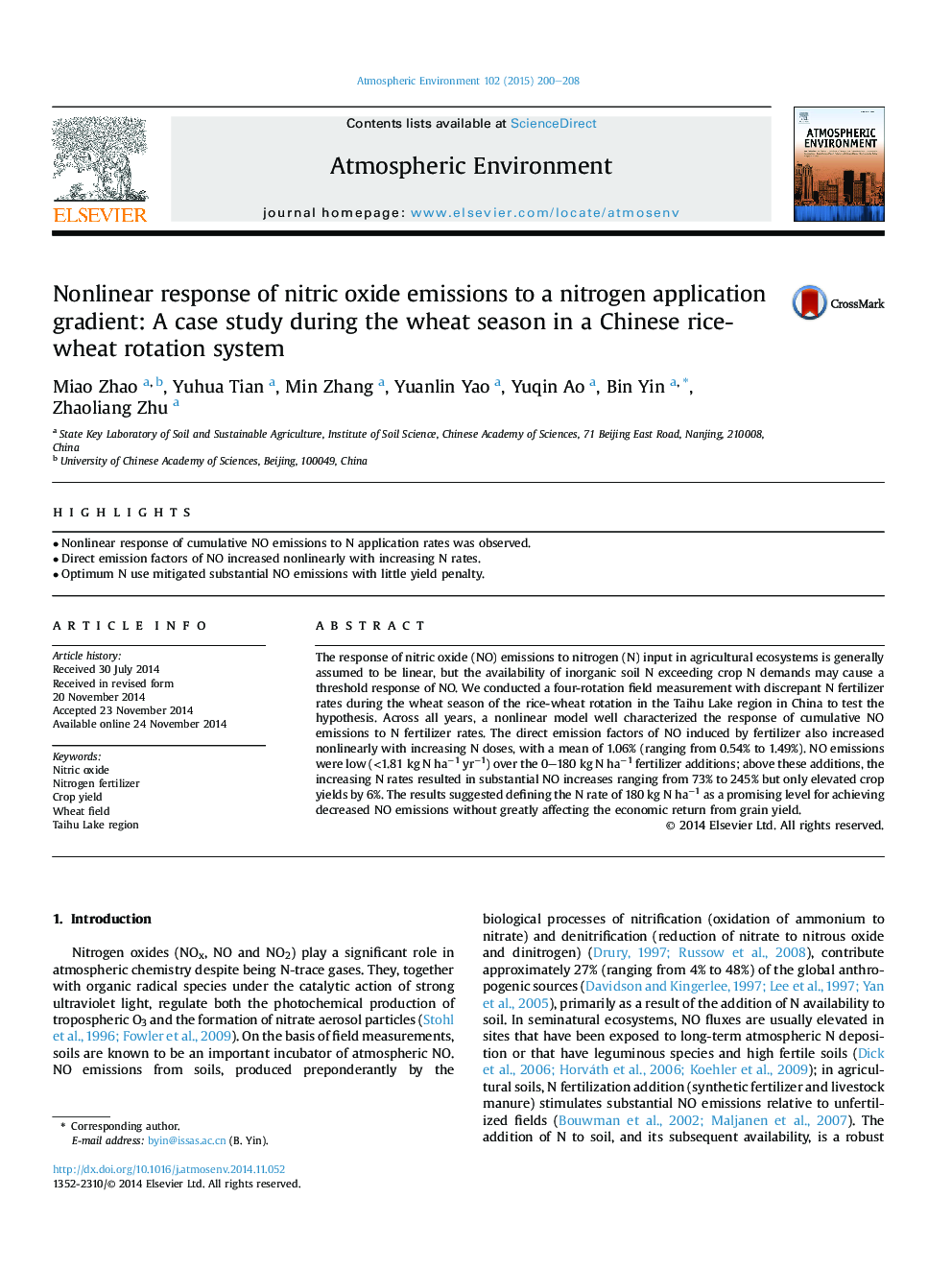| Article ID | Journal | Published Year | Pages | File Type |
|---|---|---|---|---|
| 6338855 | Atmospheric Environment | 2015 | 9 Pages |
Abstract
The response of nitric oxide (NO) emissions to nitrogen (N) input in agricultural ecosystems is generally assumed to be linear, but the availability of inorganic soil N exceeding crop N demands may cause a threshold response of NO. We conducted a four-rotation field measurement with discrepant N fertilizer rates during the wheat season of the rice-wheat rotation in the Taihu Lake region in China to test the hypothesis. Across all years, a nonlinear model well characterized the response of cumulative NO emissions to N fertilizer rates. The direct emission factors of NO induced by fertilizer also increased nonlinearly with increasing N doses, with a mean of 1.06% (ranging from 0.54% to 1.49%). NO emissions were low (<1.81 kg N haâ1 yrâ1) over the 0-180 kg N haâ1 fertilizer additions; above these additions, the increasing N rates resulted in substantial NO increases ranging from 73% to 245% but only elevated crop yields by 6%. The results suggested defining the N rate of 180 kg N haâ1 as a promising level for achieving decreased NO emissions without greatly affecting the economic return from grain yield.
Related Topics
Physical Sciences and Engineering
Earth and Planetary Sciences
Atmospheric Science
Authors
Miao Zhao, Yuhua Tian, Min Zhang, Yuanlin Yao, Yuqin Ao, Bin Yin, Zhaoliang Zhu,
